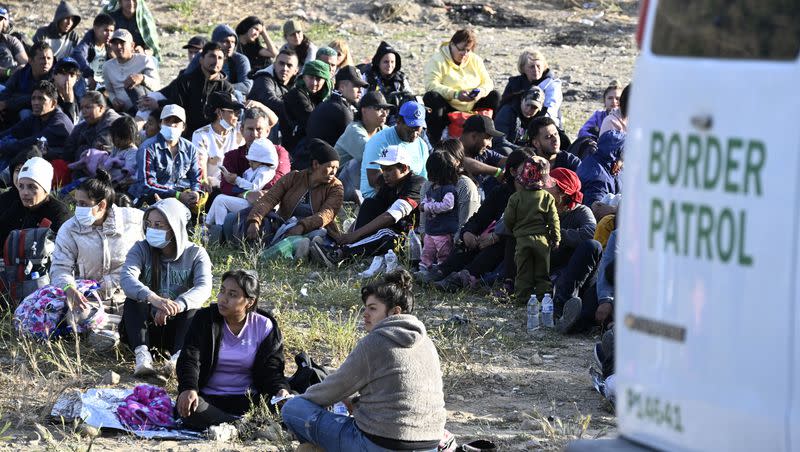Title 42 and its impacts on immigration in the U.S., explained

- Oops!Something went wrong.Please try again later.
Title 42 expires Thursday. The question is — what is it and how does it impact immigration in the U.S.?
What is Title 42?
Title 42 is a COVID-19 pandemic-era policy that former President Donald Trump’s administration put in place to curb the spread of the virus, allowing the U.S. to “quickly expel many migrants,” The Associated Press reported.
It was a section of the Public Health Service Act of 1944, which allows for the government to prevent entry of people or goods in order to prevent spread of a known communicable disease.
The rule allows border personnel to skip through “time-consuming steps it typically takes to process migrants,” and allows them to “immediately expel millions of migrants,” according to The New York Times.
Immigration advocates have argued against keeping the policy in place, saying it’s “outdated as coronavirus treatments improve,” per AP.
“We are deeply disappointed for all the desperate asylum-seekers who will continue to suffer because of Title 42, but we will continue fighting to eventually end the policy,” Lee Gelernt, a lawyer with the American Civil Liberties Union, told AP in December 2022, when the Supreme Court voted to keep the policy in place.
Republicans have argued the policy has been “an effective border control tool,” especially during President Joe Biden’s administration that has seen a significant rise in people migrating from “crisis-stricken countries like Cuba, Nicaragua and Venezuela,” CBS News reported.
How will the end of Title 42 impact migration on the southern border?
A large part that will be affected in the expiration of Title 42 is the process for migrants to request asylum. Title 42 eliminates some of the required processing for migrants who request asylum, including keeping those migrants in holding facilities until their case is fully processed. It allows border control to release migrants, even those seeking asylum, much more quickly.
With current immigration law that will go back into place once Title 42 expires, it is mandatory to keep the people seeking asylum in holding facilities until their case is fully processed.
According to the Times, one of the biggest challenges with Title 42 expiring will be “managing the high numbers of migrants in a safe and orderly way.”
U.S. Customs and Border Protection has already reported an increase in people attempting to cross the border from Mexico — 8,000 daily encounters. CNN reported that many officials are predicting that number could reach closer to 10,000 daily encounters once Title 42 ends.
“This is an international issue,” Father Rafael Garcia, a priest who runs a shelter at an El Paso, Texas, church, told CNN. “And we’re just like the neck of the bottle, or funnel.”
With the conclusion of Title 42 in place, the government will go back to Title 8 of the U.S. Code of federal statuses, which allows for “up to two years in prison if a person re-enters the country illegally after having been removed or deported,” NBC News reported.
Under Title 42, migrants could be expelled expeditiously, but those rules didn’t apply and could have been used “as a means to get multiple opportunities to enter the United States,” Ariel Ruiz Soto, a policy analyst at the Migration Policy Institute, told NBC News. “That is counterproductive, because it in some ways incentivizes migrants to try multiple times, and the more times that migrants try, the more likely that they’re successful.”
In preparation for the ending of Title 42, U.S. officials announced it will deploy 1,500 active-duty troops to assist CBP with border security, BBC reported.
Texas Republican Gov. Greg Abbott is taking a hands-on approach, announcing that the state would be deploying the state’s National Guard as a “tactical border force,” per BBC.

